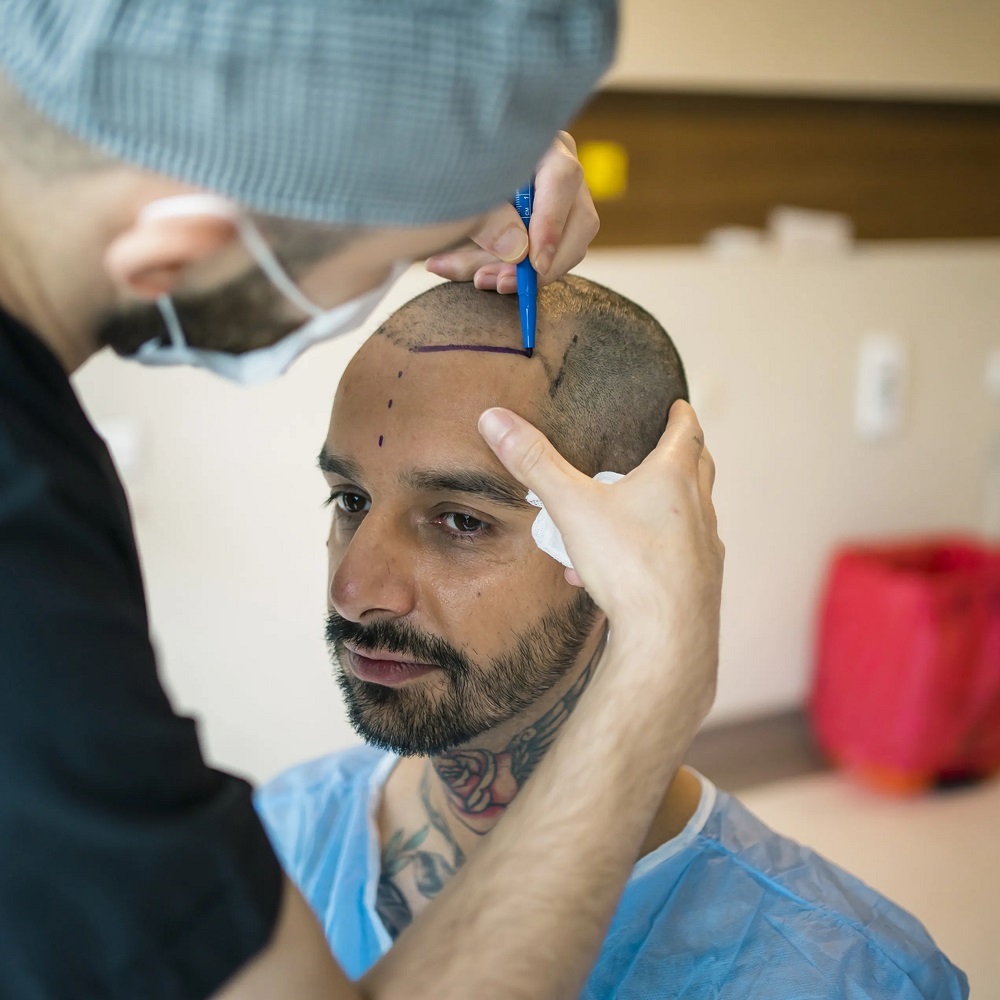PRP Treatment for Joints in London: Risks and Side Effects

Strong 8k brings an ultra-HD IPTV experience to your living room and your pocket.
Platelet-Rich Plasma (PRP) therapy has emerged as an innovative and non-invasive treatment for joint pain and injuries. By utilizing your own blood's natural healing properties, PRP helps stimulate tissue regeneration, reduce inflammation, and alleviate chronic joint pain. It has become a popular choice for people in London dealing with conditions like osteoarthritis, tendonitis, and ligament injuries, offering a natural alternative to surgery.
✍️ Interested in complementary care? Discover how natural oils, herbal remedies, and scalp massages can strengthen follicles in our section on natural hair treatments.
However, like any medical treatment, PRP therapy comes with potential risks and side effects. While it is generally considered safe due to its use of the body’s own blood, it’s essential to understand the possible adverse effects and weigh them against the benefits before deciding if PRP treatment is right for you.
In this article, we’ll explore the potential risks and side effects of PRP therapy for joints and what you can do to minimize them.
How PRP Therapy Works
PRP therapy for joints involves drawing a small sample of your blood, processing it in a centrifuge to concentrate the platelets (which contain growth factors), and then injecting the resulting platelet-rich plasma into the injured or painful joint. The growth factors in the PRP stimulate healing, reduce inflammation, and promote tissue regeneration, offering pain relief and improved joint function.
Although PRP therapy is considered a minimally invasive procedure, it is not without risks. It’s important to be aware of these before undergoing treatment.
Potential Risks and Side Effects of PRP Therapy for Joints
1. Pain at the Injection Site
One of the most common side effects of PRP injections is pain at the site of the injection. This is typically a temporary reaction and may last for a few hours to a couple of days following the procedure. The pain is generally mild, but in some cases, it can be more intense, especially if the joint is already inflamed or if multiple injections are needed.
Mitigation: To help manage discomfort, your healthcare provider may apply a local anesthetic or ice to the injection site before the procedure. After the treatment, over-the-counter pain relief medications like ibuprofen or acetaminophen can be used to alleviate discomfort.
2. Swelling and Inflammation
Swelling and inflammation in the treated area are common side effects, particularly within the first 48 hours after the injection. The injection itself can cause irritation, and the body’s natural inflammatory response may be triggered as part of the healing process. While this is often a sign that the treatment is working, it can be uncomfortable.
Mitigation: Resting the affected joint and applying ice packs can help reduce swelling. Most swelling and inflammation resolve on their own within a few days.
3. Infection
Since PRP therapy involves injections, there is a slight risk of infection at the injection site. Though the risk of infection is minimal, it can still occur if the procedure is not carried out in a sterile environment or if proper aftercare instructions are not followed.
Mitigation: Ensure that your treatment is performed in a reputable clinic by a trained and experienced healthcare provider. Follow all post-procedure care instructions, including keeping the injection site clean and avoiding submerging the treated joint in water for a few days to minimize the risk of infection.
4. Bleeding or Bruising
As with any injection, there is a risk of bleeding or bruising at the injection site. This is typically a minor issue, but in some cases, bruising can be more pronounced, particularly if you have a tendency to bruise easily or are taking medications that affect blood clotting (e.g., aspirin or blood thinners).
Mitigation: If you are prone to bruising or have a history of bleeding issues, it’s important to inform your healthcare provider before the procedure. They may recommend stopping certain medications prior to treatment.
5. Nerve Injury
Although rare, there is a potential risk of nerve injury during the injection process. If a needle is inserted too deeply or at the wrong angle, it may inadvertently affect a nearby nerve, causing temporary numbness, tingling, or weakness in the treated area.
Mitigation: Choosing an experienced healthcare provider with expertise in administering PRP injections significantly reduces the risk of nerve damage. Skilled practitioners use precise techniques to avoid nerve damage during the procedure.
6. No Immediate Improvement or Delayed Results
Some patients may not experience immediate pain relief following the PRP injection. Since the therapy works by stimulating the body's healing process, it can take several weeks to months for the full effects to be noticed. In some cases, patients may feel temporary discomfort before experiencing improvement.
Mitigation: Patience is key when it comes to PRP therapy. For optimal results, patients should follow their healthcare provider's aftercare recommendations, including engaging in appropriate rehabilitation exercises and physical therapy to enhance the healing process.
7. Exacerbation of Pain (Initial Flare-Up)
A small percentage of patients may experience a temporary flare-up of pain after the injection, as the body responds to the healing process. This is typically short-lived, but it can be uncomfortable and cause concern for some individuals.
Mitigation: Your healthcare provider may recommend applying ice and resting the joint after the procedure to manage this flare-up. If the pain persists or worsens, it’s important to reach out to your doctor for advice.
Who Should Avoid PRP Therapy?
While PRP therapy is generally safe for most patients, it’s not suitable for everyone. People who have the following conditions may need to avoid PRP treatment or seek alternative therapies:
Active infections or skin conditions: PRP therapy should not be administered to individuals with active infections, open wounds, or skin conditions in the area to be treated.
Blood disorders: Individuals with blood clotting disorders (such as hemophilia or thrombocytopenia) or those on anticoagulant medication should consult with their doctor before considering PRP treatment.
Cancer: PRP therapy may not be appropriate for individuals with a history of cancer, as the growth factors in PRP could potentially stimulate the growth of cancer cells.
Pregnancy and breastfeeding: The safety of PRP therapy during pregnancy or while breastfeeding has not been extensively studied, so it is generally recommended to avoid the procedure during these times.
Conclusion
PRP therapy is a promising and minimally invasive treatment for joint pain and injuries, offering the potential for long-lasting pain relief and tissue regeneration. However, like any medical treatment, it comes with risks and potential side effects. The most common side effects include pain, swelling, and inflammation at the injection site, but these are generally mild and temporary. Serious complications, such as infections or nerve injury, are rare when the procedure is performed by a skilled professional in a sterile environment.
Before undergoing PRP treatment for joints in London, it’s essential to have a thorough consultation with a qualified healthcare provider who can assess your medical history and determine whether PRP therapy is suitable for you. By understanding the potential risks and side effects, you can make an informed decision and take the necessary precautions to ensure the best possible outcome from your treatment.
Note: IndiBlogHub features both user-submitted and editorial content. We do not verify third-party contributions. Read our Disclaimer and Privacy Policyfor details.







